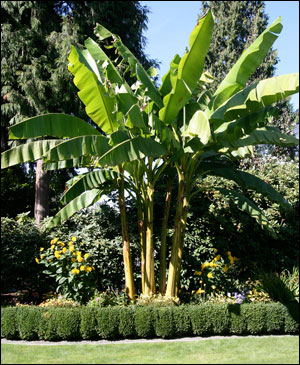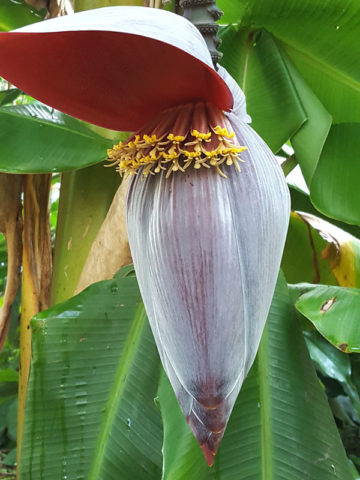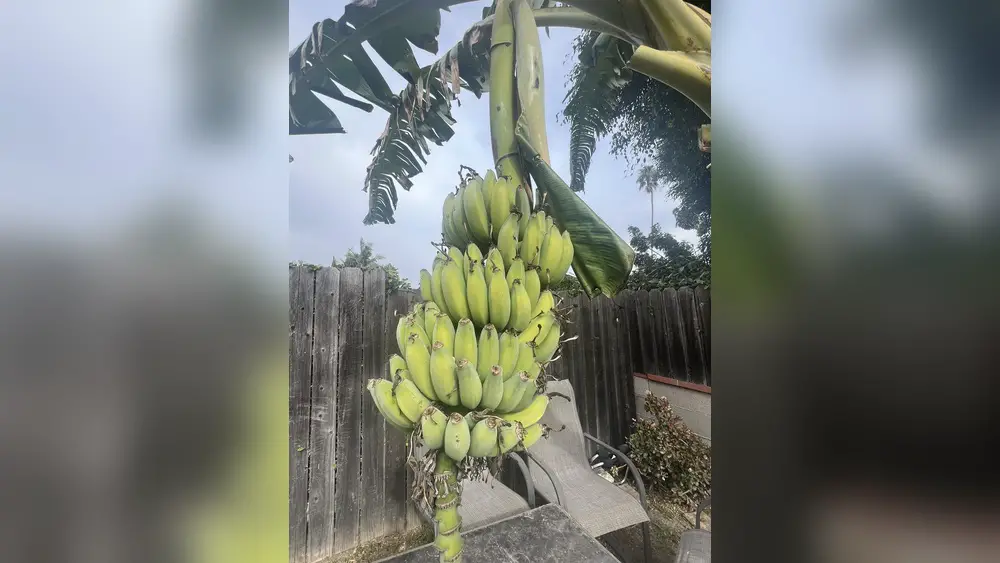If you’re living in Florida and dreaming of growing your own bananas, choosing the right banana plant is key to your success. Not every banana variety thrives under Florida’s unique climate, so you need a plant that can handle the heat, humidity, and occasional storms.
Imagine biting into fresh, homegrown bananas with rich flavor, straight from your backyard—sounds amazing, right? You’ll discover the best banana plants perfectly suited for Florida gardens. Whether you want compact plants for limited space or heavy producers for a fruitful harvest, we’ll guide you to the varieties that will flourish and bring you delicious rewards.
Keep reading to find the ideal banana plant that turns your Florida garden into a tropical paradise!
Top Banana Varieties For Florida
Florida’s warm climate supports many banana varieties. Choosing the right type helps you enjoy fresh fruit and beautiful plants. Some bananas grow better in Florida’s soil and weather. Here are top banana varieties suited for Florida gardens and landscapes.
Dwarf Nam Wah
Dwarf Nam Wah bananas are popular in Florida. They produce sweet, creamy fruit with a rich flavor. The plants stay compact, perfect for smaller spaces. They handle Florida heat and humidity well. Their early fruiting makes them a favorite among gardeners.
Dwarf Orinoco
Dwarf Orinoco bananas grow well in Florida’s climate. Their fruit is starchy and good for cooking. The plants are sturdy and resist wind damage. They add a tropical look with broad green leaves. Ideal for home gardens with limited space.
Grand Nain
Grand Nain bananas are widely grown commercial types. They produce large, sweet bananas perfect for fresh eating. This variety grows tall but adapts to Florida’s conditions. It requires good watering and rich soil. A reliable choice for fresh fruit lovers.
Dwarf Cavendish
Dwarf Cavendish bananas are compact and productive. Their fruit is sweet and commonly found in stores. These plants resist many pests and diseases. They do well in Florida’s warm, humid environment. Great for backyard growers wanting tasty bananas.
Praying Hands
Praying Hands bananas have unique, twisted fruit clusters. The bananas are sweet with a hint of tanginess. Plants stay medium-sized and add an exotic look. They tolerate Florida’s heat and occasional storms. A striking choice for gardeners wanting unusual bananas.
Raja Puri
Raja Puri bananas offer sweet, aromatic fruit. The plants are medium height and grow well in Florida. They handle heat and humidity with ease. This variety produces fruit year-round in good conditions. Perfect for fresh eating or desserts.
Blue Java
Blue Java bananas are known as “ice cream bananas.” Their fruit is creamy and sweet with vanilla notes. The plants have blue-green leaves that brighten any garden. They tolerate Florida’s weather and grow well outdoors. A tasty and attractive banana variety.

Credit: gardeningsolutions.ifas.ufl.edu
Traits For Florida Gardens
Choosing the best banana plant for Florida gardens means understanding key traits. These traits help the plant thrive in Florida’s climate. Successful banana plants must handle heat, humidity, and occasional cold snaps. They also need to resist diseases common in the region. Fruit quality and plant size matter for garden space and enjoyment.
Cold Hardiness
Florida winters can bring unexpected cold. Banana plants with cold hardiness survive brief frosts. These varieties recover quickly and keep growing. Plants like Musa Basjoo handle cooler temperatures better. Cold hardy banana plants protect your investment and ensure fruit production each year.
Disease Resistance
Florida’s humid climate encourages fungal and bacterial diseases. Choose banana plants with strong disease resistance. Resistant plants stay healthy with less care and fewer chemicals. This trait reduces losses from pests and infections. Healthy plants produce better fruit and grow stronger.
Fruit Flavor And Texture
Flavor and texture impact the enjoyment of homegrown bananas. Florida gardeners prefer sweet, creamy bananas with smooth texture. Varieties like Dwarf Nam Wah offer rich flavor. Good texture means the fruit is easy to eat fresh or cook. Choose plants that deliver tasty, satisfying bananas.
Plant Size And Growth Habit
Space in Florida gardens varies from large yards to small patios. Banana plants with compact growth fit better in smaller spaces. Dwarf varieties stay manageable and produce fruit faster. Growth habit also affects sunlight needs and wind resistance. Select plants that suit your garden size and layout.
Planting Tips
Planting banana plants in Florida requires careful attention to their needs. Proper planting ensures strong growth and healthy fruit production. Follow these essential tips for the best results in your Florida garden.
Soil Preparation
Choose well-draining soil rich in organic matter. Loosen the soil to a depth of at least 12 inches. Add compost or aged manure to improve fertility. Avoid heavy clay soils that hold water. Test the soil pH and aim for 5.5 to 7.0 for optimal growth.
Sunlight And Water Needs
Banana plants need full sun for at least 6 hours daily. Place them in a sunny spot protected from strong winds. Water deeply and regularly to keep soil moist but not soggy. Mulch around the base to retain moisture and reduce weeds. Reduce watering slightly during cooler months.
Spacing And Support
Space banana plants at least 8 to 10 feet apart. This spacing allows airflow and room for large leaves. Provide sturdy support such as stakes or a trellis for tall varieties. Remove any suckers early to focus energy on the main plant. Proper spacing and support prevent damage and promote healthy growth.

Credit: urbantropicals.com
Care And Maintenance
Caring for banana plants in Florida requires attention to several key areas. Proper care ensures healthy growth and abundant fruit. Understanding fertilizing, pest control, and pruning helps keep plants strong.
Florida’s warm climate supports many banana varieties. Regular maintenance prevents common problems and encourages better yields. Follow simple steps to maintain your banana plants effectively.
Fertilizing Schedules
Banana plants need frequent feeding for good growth. Use a balanced fertilizer rich in potassium and nitrogen. Apply fertilizer every 4 to 6 weeks during the growing season. Water the plants well after fertilizing to help nutrient absorption.
Organic compost or manure can improve soil quality. Avoid over-fertilizing, which can harm roots and reduce fruit quality. Monitor plant leaves for signs of nutrient deficiency or excess.
Pest And Disease Control
Banana plants in Florida face pests like aphids, spider mites, and nematodes. Inspect leaves and stems regularly to spot early signs. Use insecticidal soap or neem oil to manage pests naturally.
Diseases such as Panama disease and leaf spot can affect bananas. Remove infected leaves and dispose of them safely. Ensure good air circulation by spacing plants correctly. Avoid overhead watering to reduce fungal growth.
Pruning And Harvesting
Prune banana plants to remove dead or damaged leaves. This improves air flow and reduces pest habitats. Cut old stems after fruit harvest to allow new shoots to grow. Use clean tools to prevent disease spread.
Harvest bananas when fruits are plump and slightly green. Cut the whole bunch carefully to avoid damaging the plant. After harvesting, the plant will produce new shoots for the next crop.
Common Challenges In Florida
Growing banana plants in Florida can be rewarding but comes with specific challenges. The state’s climate and environment create conditions that banana plants must endure. Understanding these common problems helps gardeners choose the right varieties and care methods.
Wind Damage
Florida often faces strong winds, especially during hurricane season. Banana plants have large leaves that can tear easily. Wind can break stems and damage the plant’s structure. Planting bananas in sheltered spots reduces wind impact. Using windbreaks like fences or shrubs can protect young plants.
Cold Spells
Although Florida is mostly warm, cold spells sometimes occur in winter. Banana plants are sensitive to frost and cold temperatures below 32°F. Cold can cause leaf browning and slow growth. Covering plants with frost cloth or blankets helps during cold nights. Choosing cold-hardy banana varieties increases survival chances.
Pests Specific To Florida
Florida’s warm climate attracts many pests that harm banana plants. These include aphids, spider mites, and banana weevils. Pests can eat leaves, weaken plants, and spread diseases. Regular inspection and natural pest control methods keep infestations low. Using insecticidal soap or neem oil helps protect plants safely.
Where To Buy Banana Plants
Choosing the right place to buy banana plants is key for Florida gardeners. Healthy plants start strong growth and good fruit. Several options exist to find banana plants suited to Florida’s climate. Understanding these options helps in making the best choice for your garden.
Local Nurseries
Local nurseries offer banana plants adapted to Florida’s weather. You can see the plants before buying. Staff can give advice on care and planting. Visiting a nursery supports local businesses and reduces shipping stress on plants. Local nurseries often have popular varieties like Dwarf Nam Wah and Grand Nain.
Online Suppliers
Online suppliers provide a wide selection of banana plants. You can find rare types not found in local stores. Many sellers offer delivery directly to your door. Check for Florida-hardy varieties like Blue Java and Praying Hands. Read reviews to ensure plant quality and service reliability.
Price Comparisons
Prices vary between local and online sellers. Local nurseries may have higher prices but no shipping fees. Online stores often offer discounts and free delivery. Compare prices for similar plants to find the best deal. Consider plant size, variety, and shipping costs before buying.

Credit: askthegreengenie.com
Frequently Asked Questions
What Are The Best Bananas To Grow In Florida?
The best bananas to grow in Florida are Dwarf Nam Wah, Dwarf Orinoco, Praying Hands, Grand Nain, and Dwarf Cavendish. Blue Java and Raja Puri also thrive well. These varieties offer good taste, strong growth, and disease resistance suitable for Florida’s climate.
Is Florida A Good Place To Grow Bananas?
Florida’s warm, humid climate supports banana growth well. Varieties like Dwarf Nam Wah, Grand Nain, and Blue Java thrive there. Choose disease-resistant types for best results. Protect plants from strong winds and occasional cold snaps to ensure healthy banana production.
Which Is The Hardiest Banana Plant?
The hardiest banana plant is Musa basjoo. It tolerates cold temperatures down to 10°F and thrives in various climates. This makes it ideal for gardeners in cooler regions seeking a resilient banana variety.
What Is The Easiest Banana To Grow?
The easiest banana to grow is the Dwarf Cavendish. It resists diseases, grows compactly, and produces sweet fruit quickly.
Conclusion
Choosing the right banana plant helps your Florida garden thrive. Dwarf Nam Wah and Grand Nain offer great taste and growth. Blue Java adds unique flavor but watch for mislabeled plants. These varieties handle Florida’s heat and humidity well. Planting them ensures fresh bananas at home.
Enjoy watching your garden flourish with these hardy banana plants. Simple care brings healthy, tasty fruit each season. Start with these reliable options for best results. Your garden will thank you with lush leaves and sweet harvests.

